Soft matter at LCMCP
History to present
The historical activity of LCMCP is focused on sol-gel science and technology. However, with the development of hybrid materials, including covalent or non-covalent interactions between inorganic and organic scaffolds, more and more soft systems became a topic of research. From mid/late 90’s, a number of competences on soft molecular systems such as polymers, biopolymers and surfactants integrated the research activity of LCMCP, initially in relationship with inorganic systems, and along the years more and more as inorganic-free, stand-alone, scaffold materials.
The development of soft materials constitute an important well of knowledge at LCMCP, as soft systems are nowadays among the major research axes of at least three Teams, to which one could consider minor side activities of other teams within LCMCP. In this regard, LCMCP has developed a broad instrumental panel, but also a set of scientific competences, able to study and understand soft matter. Both university and CNRS researchers represent today the research activity of LCMCP across a wide range of scientific communities, spanning from biology, biomimetism, polymer science, colloid and interface science, physics.
Invited seminars – 2025 –
LCMCP invites renowned experts to share their knowledge in the field of soft matter. Lectures are open to anyone interested.
The full list of seminars (present, past, future) is given on the MM@LCMCP seminar page. The next upcoming seminar is given below.
Avril 2025
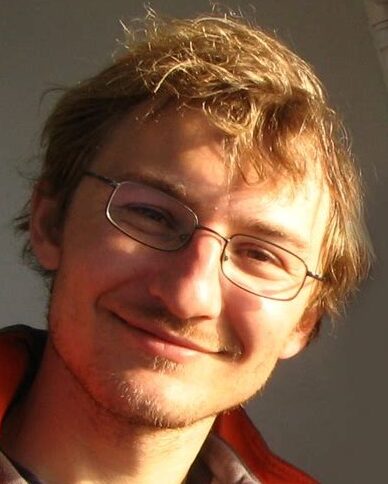 Dr. Thomas Gibaud,
Dr. Thomas Gibaud,
ENS, Lyon
Attractive colloidal dispersions: flow, gelation, yielding and sensitivity to high power ultrasound
The rheological behavior of colloidal dispersions is of paramount importance in a wide range of applications, including construction materials, energy storage systems and food industry products. Here we explore how dispersions of attractive colloids, namely carbon black particles (CB) in oil [1], flow, gel and yield and how those properties are affected by high power ultrasound. In this study, we adopt a synergistic approach, combining rheology to measure the mechanical properties of the dispersions, ultra-small-angle X-ray scattering (USAXS) to probe the structure of dispersion, ultrasonic velocimetry to access the local flow profiles and impedance to characterize the dispersion conductivity (connectivity).
28/04/2025 – 11 h
UFR de Chimie, Salle 101
Tour 32-42, Campus Pierre et Marie Curie
Sorbonne Université
4, Place Jussieu Paris 5
Online Link
Topics of research
Research involving soft matter can be found across several teams within LCMCP, although none of them has a full activity in this domain.
SMiLES Team. The team is expert in understanding the complex self-assembly processes of soft matter (hydrogels, polymers, lipids, etc.). The activity in the past years has focused on two themes: 1/ understanding the self-assembly process of microbial amphiphiles and the development of soft materials such as hydrogels, complex coacervates, emulsions. 2/ The study of the relationships between the structure, local dynamics and macroscopic rheological behavior of polymers, may them be neutral or charged.
MatBio Team. The team develops a wide diversity of materials and processes to address very diverse areas of application. Most relate to the use of biopolymers in the biomedical field and concern engineering or development approaches for biomaterials (mainly for connective tissues). The integration of new skills has made it possible to develop other fields of research, particularly through the exploitation of the physics of bio-interfaces. Furthemore, based on its experience in handling dense collagen solutions and their extrusion, the Team has developed the 3D collagen bioprinting.
MHP Team. MHP is formed to bring together members with strong expertise in the synthesis, characterization and shaping processes of materials. Among others, the team gathers up experts, in 1/ nanocomposite polymer materials, with an interest in the development of eco-responsible nanocomposite polymers for the reduction of environmental impacts through the creation of dynamic organic-inorganic hybrid networks; 2/ biology, tissue engineering and biomineralization, with the desire to explore and better understand at the fundamental level the “structure-property” relationship (optical and mechanical) of collagenous materials and couple them with suitable shaping processes, in order to obtain integrated solutions for non-toxic and minimally invasive tissue repair. 3/ Printing functional soft matter across multiple scales, with the focus on controlling the composition and structure at the molecular and nanoscale via chemical synthesis and at the microscale and macroscale via 3D printing, enabling the creation of devices with diverse functionalities, including energy devices, printed electronics, sensors, and soft robots.

J. Che, C. Zakri, M. Bronchy, W. Neri, I. Ly, P. Poulin, J. Yuan. Inkjet Printing of All Aqueous Inks to Flexible Microcapacitors for High-Energy Storage, Adv. Funct. Mater. 2023, 33, 2301544
 J. Che, C. Zakri, I. Ly, W. Neri, E. Laurichesse, J-P. Chapel, P. Poulin, J. Yuan. High-Energy-Density Waterborne Dielectrics from Polyelectrolyte-Colloid Complexes, Adv. Funct. Mater. 2023, 33, 2213804
J. Che, C. Zakri, I. Ly, W. Neri, E. Laurichesse, J-P. Chapel, P. Poulin, J. Yuan. High-Energy-Density Waterborne Dielectrics from Polyelectrolyte-Colloid Complexes, Adv. Funct. Mater. 2023, 33, 2213804
Competences
Renowed experts work at LCMCP. Link to this page to know more about them, their skills and competences.
Literature
A series of books on soft matter, soft matter physics and dynamics is proposed for further reading here.
Instrumentation
LCMCP owns, or has direct access, to a multitude of instruments, which can employed to study soft colloidal systems and materials. Below a list as of Nov 2023, where (O) is Owned and (S) is Shared with other labs at Sorbonne Université.
Small Angle X-ray Scattering (Xenocs) (S)
Rheometer (Anton Paar) (O)
Dynamic light scattering (Malvern) (O)
Polarized light microscope (O)
Fluorescence microscope (O)
Dynamic scanning calorimetry (O)
Nuclear magnetic resonance (Bruker): solid-state 300 MHz (O), 700 MHz (S); liquid-state 300 MHz (O), 500 MHz (S). Probes: HR-MAS 4 mm (O), 1.3 mm (S)
Cryogenic Transmission electron microscopy (O)
Dynamic mechanical analysis (O)
Processing
LCMCP has a strong expertise in 1D, 2D and 3D materials processing. Most techniques are developed to be applied to the shaping of inorganic or hybrid materials, but some are extended to process soft matter. One can find the following:
Inkjet printing
3D printing
Spray drying
Supercritical CO2
Freeze drying
Directional freezing
Electroformation
Controlled drying
Knowledge
LCMCP has researchers with established competences in soft matter science and technology. At the same time, LCMCP welcomes internal and external collaborations, seminars and guests to develop its soft matter skills in the next years. The most important skills at LCMCP are:
Use of cryo-TEM
Use of SAXS/SANS/SLS, data recording and analysis (model fitting)
NMR theory, pulse program writing, sample environment, use of NMR to study dynamics in soft materials
Processing
Basics rheology


 Poirier, A.; Griel, P. Le; Perez, J.; Hermida-Merino, D.; Pernot, P.; Baccile, N. Metallogels from Glycolipid Biosurfactant. ACS Sustain. Chem. Eng. 2022, 10, 16503–16515.
Poirier, A.; Griel, P. Le; Perez, J.; Hermida-Merino, D.; Pernot, P.; Baccile, N. Metallogels from Glycolipid Biosurfactant. ACS Sustain. Chem. Eng. 2022, 10, 16503–16515.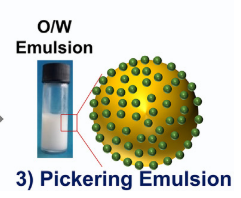


 Kankan Qin, Rui Pereira, Thibaud Coradin, Verónica de Zea Bermudez, Francisco M. Fernandes. Biomimetic Silk Macroporous Materials for Drug Delivery Obtained via Ice-Templating. ACS Applied Bio Materials, 2022, 5 (6), pp.2556-2566
Kankan Qin, Rui Pereira, Thibaud Coradin, Verónica de Zea Bermudez, Francisco M. Fernandes. Biomimetic Silk Macroporous Materials for Drug Delivery Obtained via Ice-Templating. ACS Applied Bio Materials, 2022, 5 (6), pp.2556-2566 Stéphanie de Oliveira, Gregor Miklosic, Joelle Veziers, Sébastien Grastilleur, Thibaud Coradin, et al.. Optimizing the physical properties of collagen/hyaluronan hydrogels by inhibition of polyionic complexes formation at pH close to the collagen isoelectric point. Soft Matter, 2023,19, 9027-9035
Stéphanie de Oliveira, Gregor Miklosic, Joelle Veziers, Sébastien Grastilleur, Thibaud Coradin, et al.. Optimizing the physical properties of collagen/hyaluronan hydrogels by inhibition of polyionic complexes formation at pH close to the collagen isoelectric point. Soft Matter, 2023,19, 9027-9035 Prince David Okoro, Antoine Frayssinet, Stéphanie de Oliveira, Léa Rouquier, Gregor Milkosic, et al.. Combining biomimetic collagen/hyaluronan hydrogels with discogenic growth factors promotes mesenchymal stroma cell differentiation into Nucleus Pulposus like cells. Biomaterials Science, 2023,11, 7768-7783
Prince David Okoro, Antoine Frayssinet, Stéphanie de Oliveira, Léa Rouquier, Gregor Milkosic, et al.. Combining biomimetic collagen/hyaluronan hydrogels with discogenic growth factors promotes mesenchymal stroma cell differentiation into Nucleus Pulposus like cells. Biomaterials Science, 2023,11, 7768-7783 
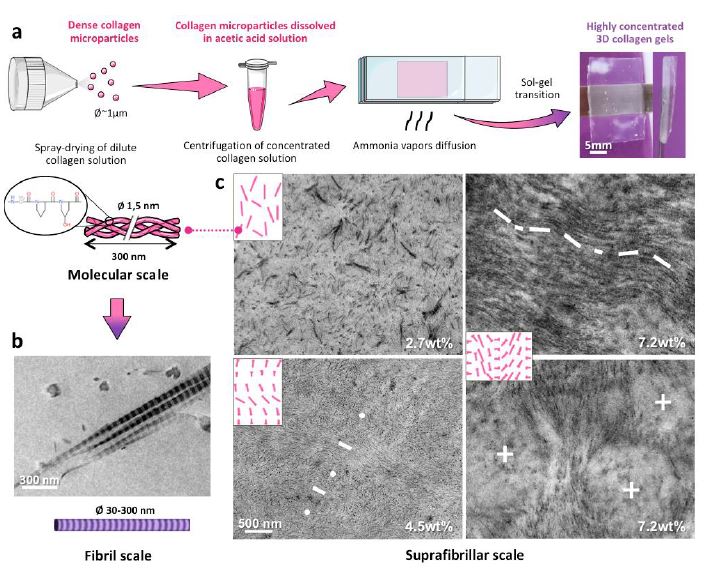
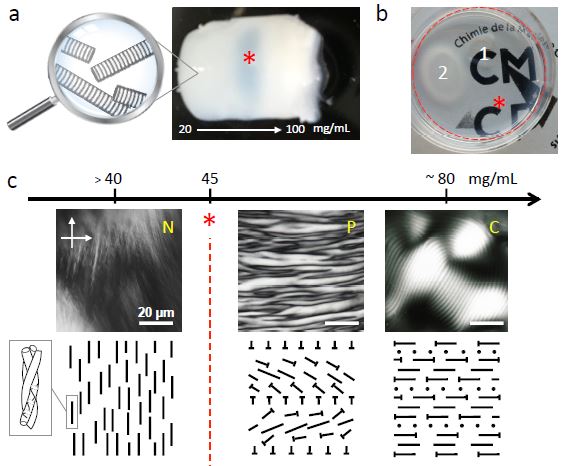
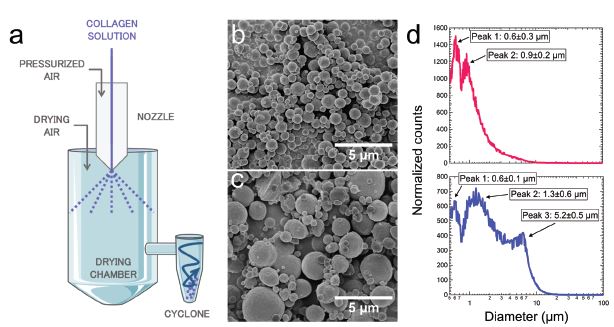
 Fabien Périneau, Sandrine Pensec, Clément Sanchez, Costantino Creton, Laurence Rozes, et al.. Supramolecular design for polymer/titanium oxo‐cluster hybrids: an open door to new organic–inorganic dynamers. Polymer Chemistry, 2011, 2 (12), pp.2785
Fabien Périneau, Sandrine Pensec, Clément Sanchez, Costantino Creton, Laurence Rozes, et al.. Supramolecular design for polymer/titanium oxo‐cluster hybrids: an open door to new organic–inorganic dynamers. Polymer Chemistry, 2011, 2 (12), pp.2785